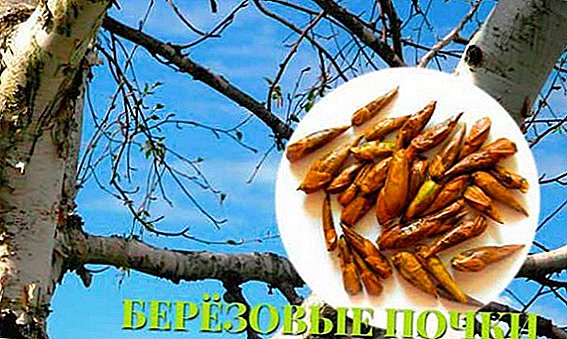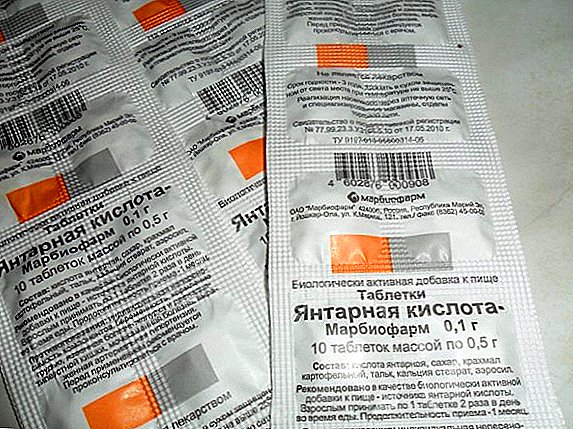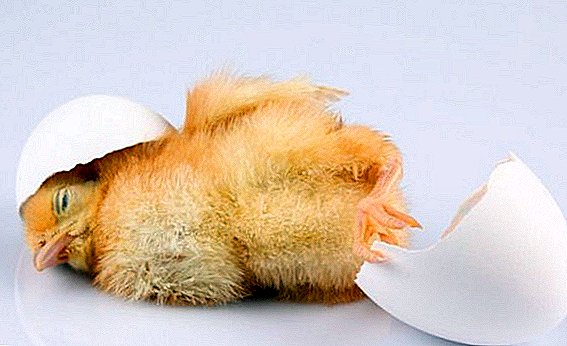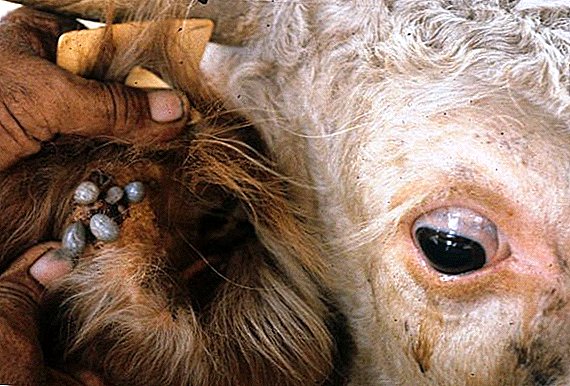 Cows are one of the few farm animals that constantly suffer from the heightened attention of a whole swarm of insects: they attract flies, mosquitoes, gadflies, midges, hypodermic gadflies and ticks.
Cows are one of the few farm animals that constantly suffer from the heightened attention of a whole swarm of insects: they attract flies, mosquitoes, gadflies, midges, hypodermic gadflies and ticks.
Of course, the responsible owner will want to rid his nurse of this scourge, which means it will be useful for him to learn about the popular means for protection against insects - this is further in the article.
What are dangerous insects for cows?
In addition to the fact that insects give the cow discomfort due to its bites, the effects of their presence on the skin can be much more significant. Let's find out what the most common pests of our area threaten to these animals:
- Housefly is a carrier of various microorganisms, especially worms and calves. They are often the cause of the development of invasive conjunctival keratitis, as well as some other infectious and highly contagious ailments.
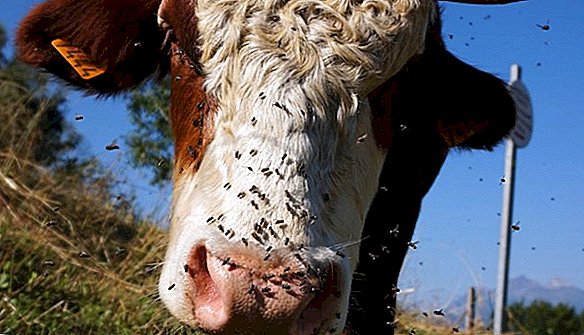
- Blind - quite capable of transmitting anthrax, anaplasmosis, tularemia and filariasis to the cow. All these infections threaten the life of the animal and can be fatal, and the entire livestock.
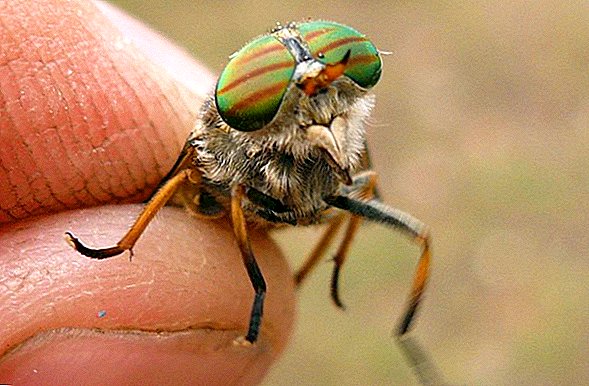
- Burners - flies, which, like previous insects, can cause anthrax, as well as anaplasmosis, brucellosis and many other less dangerous diseases.

- Various species of flies are capable of provoking shamuliotoksikoz, also called a toxic-allergic reaction.
- Mosquitoes - carriers of arbovirus infection and anaplasmosis, which can be transmitted to the cow.
- Hypodermic gadfly is dangerous because of its ability to tolerate hypodermatosis.
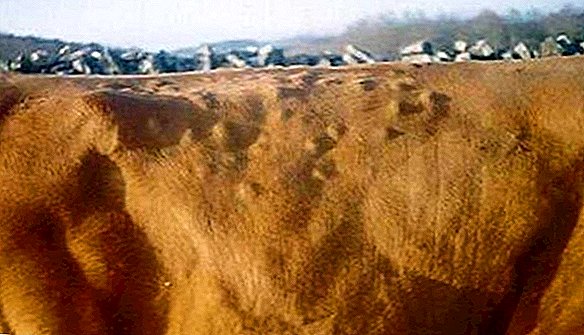
- Ticks - intensify their activities with the advent of heat and can contribute to degenerative-destructive changes in the tissues of the body. Of the various species of these insects, Dermacentor and Ixodes, carriers of anaplasmosis, piroplasmosis, babesiosis, are among the most dangerous. At the same time, demodectic mites, parasitic in the hair follicles and sebaceous glands of cows, cause strong allergic reactions and can lead to inflammation of various structures of the epidermis.
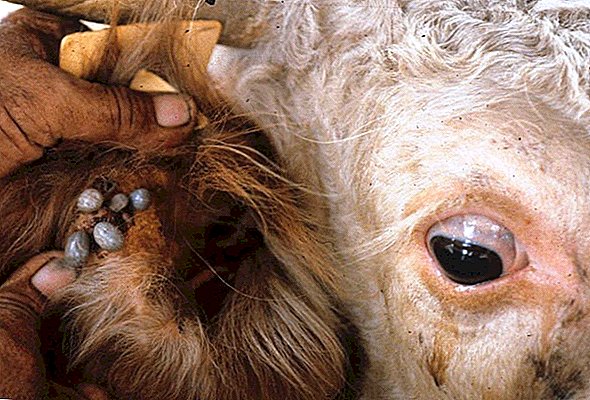
Did you know? Cows are distinguished by very good eyesight, and the structure of their eyes provides the animals with almost a panoramic view, allowing them to follow the approaching object from any direction.
How to rid a cow of blood-sucking insects
There are many drugs on the market today that can deal with the problem of insects, and most of them are supplied in aerosol and water-soluble form (gels and ointments are more often designed to eliminate localized problems: for example, in the udder area or eyes).
Purchased drugs
Each group of currently popular insect repellent chemicals has its own leaders, differing from the rest not only in high efficacy, but also in relatively safe composition.
Consider a few well-proven groups of tools:
- Aerosol forms from ticks, flies and other insects (Aleland, Acrodex, Oxarep, Centaurus, Extrasol, Butox) have proven themselves well. Thanks to the convenient dispenser, the liquid mixture is very simply distributed throughout the cow's body, thereby forming a uniform protection for several days. After this period, the manufacturer recommends repeating the processing. Most of the aerosol preparations are also suitable for treating the barn.
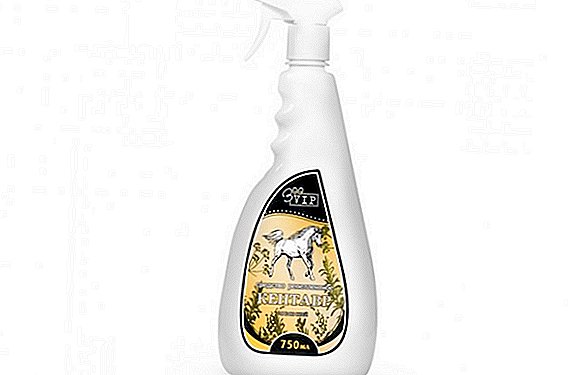
- Water-soluble products are supplied in the form of a highly concentrated liquid, which is dissolved in pure water before use (usually 1 liter per 1 ml). This amount of working solution is more than enough to protect one cow, and for ease of application you can use a spray bottle. Good options from this group are “Butox”, “Sebacil”, “Deltox”, “Aversect”, “Entomozan”. The effectiveness of these drugs is clearly visible the first few days after application. Separately, it is worth noting means "Bayoflay Pur-on", supplied in the form of an oily emulsion, which must be applied to the skin of the back, ranging from withers and to the sacrum. Its positive effect is observed almost immediately after application, and the effect lasts 28 days.

- Considering that bloodsucking insects prefer delicate skin areas without wool cover, antiparasitic ointments, liniments and udder masks will be equally relevant. Compounds with the presence of eucalyptus oil, rosemary, lavender, menthol, laurel and camphor are considered to be particularly effective (a good option is the preparation "Sanofit"). All of them have a very pungent odor and quickly repel blood-sucking pests. At the same time, many such agents have anti-edema, anti-inflammatory and antiseptic effect, contributing to more rapid healing of existing bites.

- The increased attention of flies to the eyes of cows often leads to the development of such an ailment as calves, which can significantly impair vision. For prophylactic purposes and to repel insects, special gels are used in small doses (for example, Oftalmogel), but if the disease has already been diagnosed, half measures will not work and you will have to use the full dosage of one or another drug.

Important! If you are going to use several formulations at the same time, then it is worth checking their compatibility with a veterinarian in order not to provoke an allergic reaction or other unpleasant consequences.
Folk remedies
In those cases when there is no access to the pharmacy, and the animals need help immediately, folk remedies will come to the rescue of the farmer to help cope with insects not much worse than commercial preparations. So, you can treat the cow with tar or machine oil, or apply a mixture of shampoo and vegetable oil on the skin in a 1: 2 ratio.
No less useful in this case will be infusions of mint, tansy, wormwood, laurel, which is poured into a spray bottle and sprayed throughout the body of the animal. Simply put, annoying insects will scare away any strongly smelling agent, but you need to make sure that it does not harm the cow itself.
What can be treated barn
For the treatment of the barn, the same tools are often used as for scaring insects from the animals themselves. Among commercial products, aerosols and water-soluble emulsions are considered the most popular, but in their absence, you can always choose one of the most effective folk remedies. Consider each option more closely. 
Purchased drugs
Good representatives of the aerosol group are the above-mentioned products called "Akrodex", "Centaur", "Extrasol" and some other, but even the best drugs will not be able to provide a lasting effect. Spraying is carried out in a well-ventilated room, after which it is closed for several hours.
Of course, animals at this time should be absent. On average, 10 square meters. m. barn consumes about 2 liters of working fluid, so in some cases the use of aerosol preparations can not be called a cost-effective solution.
Among the compositions aimed at the destruction of flies in the room, it is necessary to allocate "Flybayt" and "Agita". They effectively eliminate flies (they contain their sex hormone), but they will not cope with other insects, therefore during processing they will have to combine different compositions.
Learn how to graze a cow in a pasture, how to wean a cow to butt what a barn should be.The agent mixed with water (Agita is dissolved in a 1: 1 ratio) is treated with at least 30% of the surface of the ceiling and walls, paying particular attention to places with a large accumulation of midges.
"Flybayt" is presented in the form of small yellow granules, which, unlike the previous version, do not dissolve, but simply lay out in the barn, in areas with a large accumulation of insects.  Before treatment, be sure to clean the barn.
Before treatment, be sure to clean the barn.
Pasta preparation is also allowed, for which 10 g of the preparation is mixed with 8 grams of water or syrup. The resulting mixture abundantly lubricate the walls, doors and slopes in the room with animals. The result of this treatment lasts for 3-4 weeks, the main thing is to periodically wet the applied paste.
Did you know? The most expensive beef in the world is the meat of Japanese Wagyu cows. During life, they are provided with perfect care, right up to the rubbing of the body of sake, so after slaughter for 200 g of sirloin in Europe they are asked for more than 100 dollars.As a last resort, special ribbons will help to get rid of flies, which can be purchased at almost any hardware store. However, when hanging them in the barn, it is important to maintain sufficient height so that they do not cling to the animals.
With any kind of treatment (even if you just whitewash the walls), it is worth ventilating the room for several hours and only after that return the animals. 
Folk remedies
Folk ways of dealing with midges in the barn are not able to provide such a long-lasting effect as commercial preparations, but still they are often simply indispensable in an emergency situation.
Among the most common solutions to the problem are hanging in the room fees sharply smelling herbs and fumigating the space with smoke. Among the suitable plants, it is worth noting mint, lemon balm, laurel and tansy, the bunches of which it is desirable to hang even in the most remote corners of the barn.
As for the processing of smoke, for these purposes are usually used long-burning materials, such as raw twigs, tirsa or manure. They are simply set on fire in an empty bucket and left in the barn for some time, and to enhance the effect, you can use several buckets at once.
Important! The key to animal well-being is cleanliness in the room. Therefore, before taking up chemicals or folk remedies against annoying insects, try to carry out regular cleaning and disinfection. Clean insects are less comfortable than in a dirty home, and the cows will be much more comfortable.
Flies and other various insects are not such innocuous creatures as it may seem, so if you see that a cow suffers from their annoying attention, it is better to immediately buy and use one of the aforementioned means, thereby saving it from suffering.
Video: how to protect a cow from insects with creolin
Reviews
















